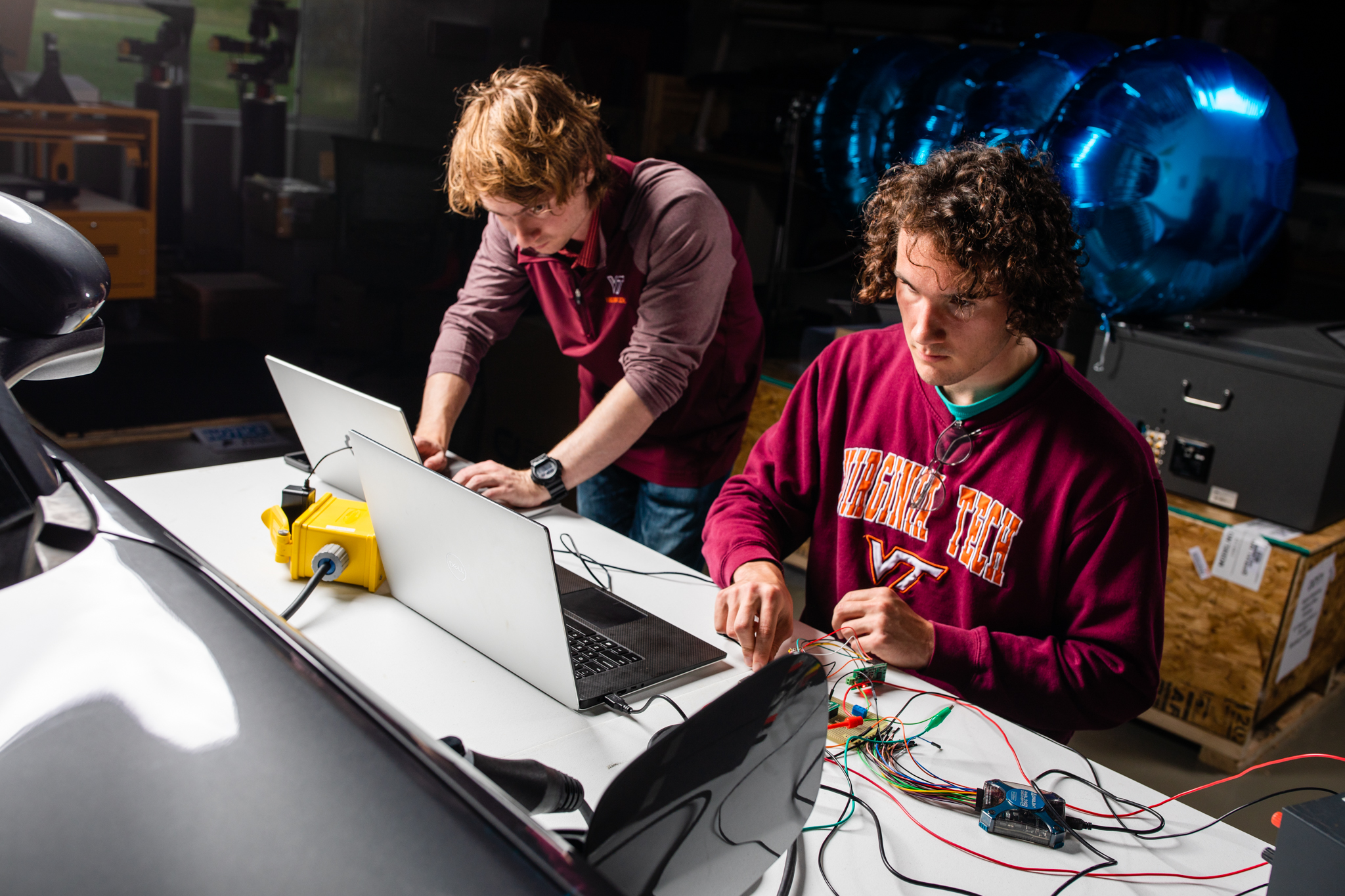Wireless Communications, Networking, & Cybersecurity

Societal expectations rely on our ability to communicate from anywhere, any time, using wireless data transfer. ECE Research is advancing the capabilities and security of these technologies, while expanding their reach and utilization. Whether it is finding a better signal while on the go or securing some of the most important repositories of personal information, wireless communications, networking, and cybersecurity research has the potential to drastically reduce the frustrations we deal with every day, while opening new avenues for technological advancement.
Associated Faculty
Highlighted Research
ECE researchers are pioneering a fundamentally new analytical approach to the analysis and design of communications systems that not only captures the current deployment trends accurately, but also facilitates analysis leading to simple and easy-to-use expressions for key performance metrics.
This approach, based on random spatial models, has been applied to the design of different types of wireless communi-cations systems, including heterogeneous cellular networks, vehicular networks, drone-assisted communications networks, energy harvesting communications, and device-to-device communications. Instead of considering network elements as deterministic, we endow them with a probability distribution. The added randomness allows us to use powerful tools from stochastic geometry for performance analysis. This approach has also been useful in areas outside communications, such as smart and connected communities and geolocation.
As the next generation of cellular commu-nication technology, 5G New Radio (NR) aims to cover a wide range of service cases, including broadband human-oriented communications, time-sensitive applications with ultra-low latency, and massive connectivity for the IoT.
NR is likely to operate on a higher frequency range than LTE, with much shorter coherence time. 5G NR is also expected to support applications with ultra-low latency. With such diverse service cases and channel conditions, the air interface design of NR must be much more flexible and scalable than that of LTE.
In our recent work, we invented an NR scheduler that can meet the stringent (~100 µs) time requirement that allows 5G NR to cope with the extremely short coherence times and support ultra-low latency applications (e.g., augmented/virtual reality, autonomous vehicles), many of which require sub-millisecond scale delay or response time.
Joint design of communications, computing, and control is essential to autonomous (ground or air) vehicles in large-scale systems, such as a smart city. Our research provides the fundamental guidelines needed to equip existing communication systems for navigating and controlling autonomous vehicles. We have developed a broad range of machine learning and optimization algorithms that can be used to design fully autonomous wireless and vehicular systems, adapting their network operation to existing users, devices, and data sets.
Cellular network architecture will play a central role in providing connectivity to areas with little or no wireless connectivity, and we have designed a 3-D cellular network that can integrate drone-carried base stations and drone users and enable 5G cellular networks to support drone-based systems. We have also developed one of the first quality-of-experience (QoE) models for deploying virtual and augmented reality (VR/AR) services over wireless networks and designed a broad number of solutions for securing autonomous cyber-physical and IoT systems.
Most existing marine communications technologies are limited and expensive. ECE researchers are working to fill the void of broadband wireless communications at sea by developing self-powered ocean mesh networks. A collection of floating base stations, or nodes, “talk” to each other to create a network connection across a large area. Once they’ve been dropped in the water, the base stations start to harvest energy from ocean waves and automatically form a mesh network. Users can then connect to the internet.
ECE researchers are developing algorithms which will transform cell phones into health monitoring devices. By assessing multiple sensory inputs, including eye movement, heart rate, gait, and body movement, these algorithms will provide early warnings for illness and disease. Initially, this technology will provide passive readiness determination for military personnel, but could later be used to help high-risk people identify health concerns before they notice symptoms.
Through partnerships and grants from DARPA and the NSF, researchers in the ECE department are working to improve the security and reliability of 5G communications, improve technology interoperability with 6G communications, and research previously underused bandwidths to meet the demands of next generation wireless networking. With the rise of the industrial Internet of Things (IoT), augmented reality systems, and connected autonomous vehicles, we need new infrastructure—and ECE researchers are up to the challenge as they expand the efficacy, accessibility, and flexibility of these systems
Other Research Topics
- Digital signal processing and filter design
- Stabilization of hoists for medical evacuation rescues
- Stochastic signals and systems
- Cognitive networks
- Moving target defense for network/ computer security


